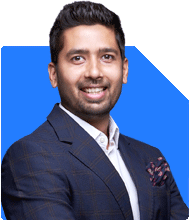I have around 1.5 Lakhs per month to invest for around 10 years . I already have dept instruments and want to invest this aggressively taking risks .. which funds and stocks do you advice for highest returns ?
Ans: Investing Rs 1.5 Lakhs Monthly for Aggressive Growth
Understanding Your Financial Goals
Firstly, it's important to appreciate your readiness to invest Rs 1.5 lakhs monthly for the next 10 years. This shows your dedication towards wealth creation. Your willingness to take risks for higher returns is commendable, and a well-thought-out plan can yield significant benefits over time.
Evaluating Current Investments
You mentioned having existing investments in debt instruments. This provides a solid foundation and ensures stability in your portfolio. Since you are looking for aggressive growth, shifting focus towards equity investments makes sense. Diversifying into equity mutual funds and direct stock investments can offer substantial returns.
Importance of Diversification
Diversifying your investments is crucial. By spreading your investments across various asset classes and sectors, you reduce risk and increase potential returns. It ensures that poor performance in one area does not significantly impact your overall portfolio.
Actively Managed Mutual Funds
Actively managed mutual funds are beneficial for aggressive investors. These funds are managed by professional fund managers who actively select stocks and adjust the portfolio based on market conditions. They aim to outperform the market, offering higher returns compared to passive funds like index funds. The expertise of a Certified Financial Planner (CFP) and a Mutual Fund Distributor (MFD) can guide you in selecting the right funds.
Benefits of Professional Management
Professional fund managers have the experience and knowledge to navigate market fluctuations. Their active approach can lead to higher returns, especially in volatile markets. They constantly monitor and adjust the portfolio to seize opportunities and manage risks.
Direct Stock Investments
Investing directly in stocks can yield high returns if done correctly. It requires thorough research and understanding of the market. Investing in a mix of large-cap, mid-cap, and small-cap stocks can be beneficial. Large-cap stocks offer stability, while mid-cap and small-cap stocks have higher growth potential.
Sectoral and Thematic Funds
Sectoral and thematic funds can be part of your aggressive investment strategy. These funds focus on specific sectors like technology, healthcare, or infrastructure. Investing in high-growth sectors can lead to significant returns. However, they come with higher risk due to sector-specific volatility.
Systematic Investment Plan (SIP)
Investing through a Systematic Investment Plan (SIP) is a disciplined approach. It allows you to invest a fixed amount regularly, averaging out the purchase cost over time. SIPs in equity mutual funds can help you build wealth systematically while mitigating market volatility.
Importance of Reviewing and Rebalancing
Regularly reviewing and rebalancing your portfolio is crucial. Market conditions change, and your portfolio should be adjusted accordingly. A Certified Financial Planner can assist in periodically reviewing your investments and making necessary adjustments to align with your goals.
Staying Informed and Updated
Staying informed about market trends and economic indicators is important. Continuous learning and staying updated with market news can help you make informed decisions. Subscribing to financial journals and attending webinars can be beneficial.
Risk Management
While aiming for high returns, it's essential to manage risks effectively. Diversification, professional management, and regular reviews help in managing risks. Setting stop-loss orders for stocks and having an exit strategy can protect your investments.
Long-Term Perspective
Investing with a long-term perspective is key. Equity investments are subject to market fluctuations, but historically, they have delivered higher returns over the long term. Patience and discipline are important virtues in the investment journey.
Tax Planning
Efficient tax planning enhances your returns. Equity investments held for more than one year qualify for long-term capital gains tax, which is lower than short-term gains tax. Utilizing tax-saving instruments within your investment strategy can be beneficial.
Role of Technology
Leveraging technology can enhance your investment experience. Using investment apps and platforms for tracking your portfolio, setting alerts, and conducting transactions can save time and effort. Many platforms offer research tools and insights that can aid in decision-making.
Regular Monitoring and Reporting
Regular monitoring of your portfolio's performance is necessary. Setting up a system for monthly or quarterly reporting helps in tracking progress towards your goals. It ensures transparency and accountability in your investment journey.
Seeking Expert Advice
Consulting with a Certified Financial Planner regularly ensures you stay on track. Their expertise and experience provide valuable insights and guidance. They can help in refining your strategy based on changing market conditions and personal circumstances.
Staying Committed to Your Goals
Staying committed to your financial goals requires discipline and perseverance. Avoiding impulsive decisions and sticking to your plan during market fluctuations is crucial. Trusting the process and being patient is essential for achieving long-term success.
Recognizing Market Cycles
Understanding market cycles helps in making informed decisions. Recognizing the phases of expansion, peak, contraction, and trough can guide your investment strategy. A well-timed entry and exit can significantly impact your returns.
Leveraging Market Opportunities
Identifying and leveraging market opportunities is vital. Staying proactive and seizing investment opportunities during market corrections can enhance your portfolio. A well-diversified portfolio allows you to take advantage of market movements.
Maintaining Liquidity
Maintaining liquidity is important for meeting short-term needs and emergencies. Having a portion of your investments in liquid funds or easily accessible instruments ensures you are prepared for unforeseen situations.
Building a Contingency Fund
Building a contingency fund is a prudent step. It acts as a safety net during financial emergencies and prevents you from liquidating long-term investments prematurely. A contingency fund should cover at least six months of expenses.
Aligning Investments with Life Goals
Aligning your investments with life goals ensures clarity and purpose. Whether it's children's education, marriage, or retirement, having specific goals helps in creating a focused investment strategy. It provides motivation and direction.
Considering Global Diversification
Considering global diversification can enhance returns and reduce risk. Investing in international funds or stocks exposes you to global opportunities. It helps in mitigating risks associated with domestic market fluctuations.
Evaluating Fund Performance
Regularly evaluating fund performance is necessary. Comparing fund returns with benchmark indices and peer funds provides insights into performance. A Certified Financial Planner can assist in analyzing performance metrics.
Understanding Market Risks
Understanding market risks is crucial for aggressive investors. Market risks include volatility, economic downturns, and geopolitical events. Being aware of these risks helps in making informed decisions and managing expectations.
Financial Discipline and Patience
Financial discipline and patience are key to successful investing. Consistent investing, avoiding panic during market downturns, and staying focused on long-term goals are essential. Trusting the process and having faith in your strategy leads to success.
Final Insights
Investing Rs 1.5 lakhs monthly for 10 years in aggressive growth instruments can significantly build wealth. Diversifying across actively managed mutual funds, direct stocks, and sectoral funds offers potential for high returns. Professional management, regular reviews, and staying informed are crucial for success. Managing risks, maintaining liquidity, and aligning investments with life goals ensure a balanced approach. Trusting the process, staying disciplined, and seeking expert advice will guide you towards achieving your financial aspirations.
Best Regards,
K. Ramalingam, MBA, CFP,
Chief Financial Planner,
www.holisticinvestment.in





























